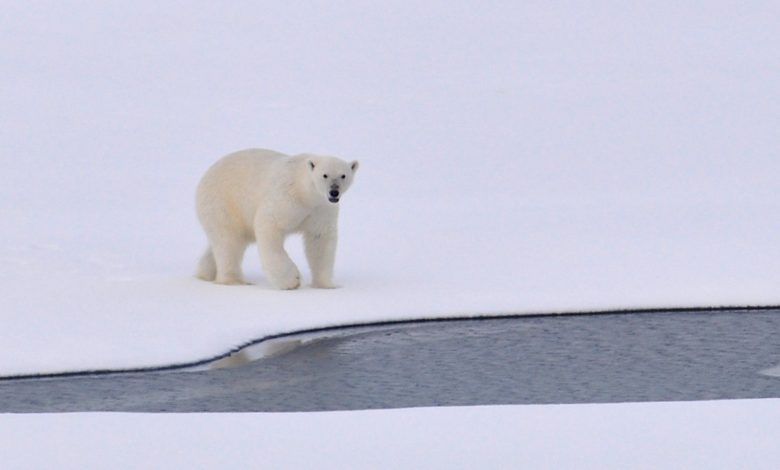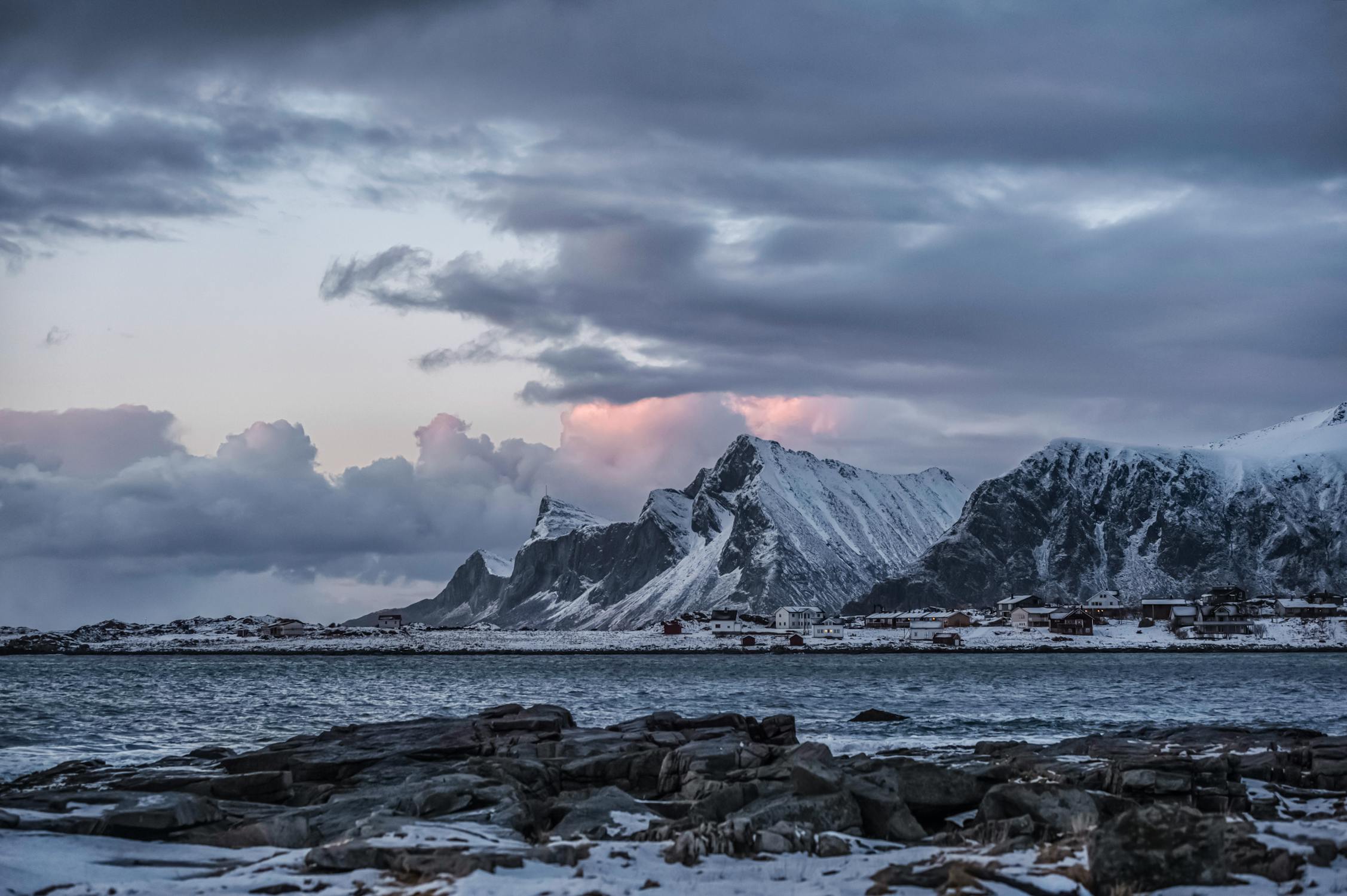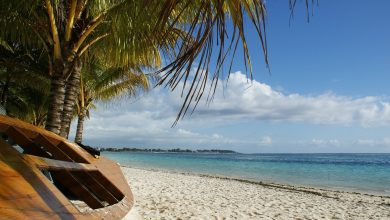Trump Opens the Arctic National Wildlife Refuge for Oil and Gas Drilling

A Victory for the Oil Industry
In spite of a significant level of opposition from environmentalists and natural resource professionals, the Trump administration has moved forward with plans to open up the Arctic National Wildlife Refuge for oil and gas drilling. In mid-August of 2020, after nearly four years of pushing to implement his fossil fuel agenda, President Trump secured a major victory for the fossil fuel industry. The U.S. Department of the Interior issued a formal statement and a Record of Decision to media outlets that highlighted the finalized plan to allow for oil and gas leasing in one of the most environmentally sensitive areas on the planet. After a series of environmental impact statements were finalized by the U.S. Department of Commerce, the National Oceanic and Atmospheric Administration, the National Marine Fisheries Service, and the Office of Protected Resources, the Trump administration was given the green light to open up the region to oil and gas operations.
Following the Tax Cuts and Jobs Act of 2017, a number of environmentalists and energy analysts were surprised to see that a provision related to drilling for oil and gas in the Arctic was slipped into the legislation. In addition to including a wide array of policies like reducing tax rates for individuals and businesses, eliminating personal exemptions, and increasing the standard deduction, Republican leaders in Congress were able to add a provision within the 2017 tax bill that authorized fossil fuel exploration within the Alaskan wilderness. The 2017 tax bill specifically highlighted the sale of oil and gas leases along the coastal plains of the Arctic Ocean and within a region known as Alaska’s North Slope. The policy language within this bill has set the stage for the future of fossil fuel exploration in the Arctic.

A Lengthy Environmental Battle
The battle over oil and gas drilling within the Arctic National Wildlife Refuge has been once of the fiercest environmental clashes in U.S. history. For over four decades, federal law has prohibited fossil fuel companies from extracting oil and gas within the Arctic National Wildlife Refuge. In 1980, the U.S. Congress enacted the Alaska National Interest Lands Conservation Act, which was aimed at protecting 67,000 square miles of wilderness across Alaska. Members of Congress were once committed to protecting the pristine wilderness in this region. The Arctic National Wildlife Refuge is home is a vast array of rare plants, animals, and migratory birds. In addition to caribou, polar bears, black bears, brown bears and moose, this region is also home to rare species of lynx, the Arctic fox, and walruses. Migratory birds include sandpipers, peregrine falcons, and merlins, all of which nest in the region during the summer months prior to flying back to the continental U.S. during the winter.
As a result of the presence of pristine landscapes filled with rare species of plants and animals, it comes as no surprise that environmentalists have expressed their outrage with the Trump administration’s decision to open up the region to the oil and gas industry. The president of the Natural Resources Defense Council, Gina McCarthy, says that “The administration’s reckless, relentless boosting of the oil industry will irrevocably damage this cherished place and compound the global climate crisis” (Bonogofsky, 2020). Representatives from the World Wildlife Fund issued similar statements in opposition to the plans. They said, “Drilling in the Arctic National Wildlife Refuge poses an intolerable risk to one of our nation’s greatest natural treasures. The Refuge is one of the few places remaining in the world where wildlife has the freedom to roam, and communities’ ancient traditions are deeply rooted to the land and sea” (Crispino, 2020).

Congressional Support
In contrast to the statements made by environmental organizations, Interior Secretary David Bernhardt has called the decision to move forward with oil and gas leasing a major milestone for the Arctic National Wildlife Refuge. Bernhardt has consistently touted the potential for economic benefits, both for oil and gas companies as well as the indigenous communities that inhabit the region. Alaska’s Republican congressional delegates also celebrated the news that the region could soon be open to oil and gas operations. Senators Dan Sullivan and Lisa Murkowski, in addition to Representative Don Young, all thanked President Trump and Secretary Bernhardt for their efforts to support the fossil fuel industry and boost Alaska’s economy. In a media statement, Senator Lisa Murkowski said, “This is a capstone moment in our decades-long push to allow for the responsible development of oil resources in the refuge” (Chappell, 2020).
As part of the economic analysis conducted prior to the passing of the Tax Cuts and Jobs Act of 2017, Republicans have said that oil and gas leases in the Arctic National Wildlife Refuge could generate around $1 billion in additional federal revenue over the next decade (Meyer, 2020). The new revenue could start flowing sooner rather than later. In a recent interview with Alaska Public Media, Secretary Bernhardt said that, “I do believe there could be a lease sale by the end of the year” (Plumer & Fountain, 2020). With nearly 1.57 million acres of the Arctic National Wildlife Refuge set to be opened up for oil and gas exploration, the fossil fuel industry will also stand to profit immensely. According to recent estimates from the U.S. Geological Survey, which is the country’s biggest earth, water, environmental, and civilian mapping service, the organization has suggested that over 12 billion barrels of crude oil reserves may lie underneath the Arctic National Wildlife Refuge (Meyer, 2020). However, decades of environmental restrictions have prevented petroleum engineers from drilling in the region to conduct more precise estimates related to the region’s fossil fuel reserves.
Joe Biden’s Rebuttal
Former vice president and current Democratic nominee for president, Joe Biden, has swiftly denounced the Trump administration’s efforts to open up the Arctic to oil and gas drilling. In fact, Joe Biden has called for permanent protections for the Arctic National Wildlife Refuge. If Biden were to be elected president in the November elections, he has vowed to overturn the Trump administration’s decision on oil and gas drilling in the Arctic. However, once oil and gas leases have been officially issued to fossil fuel companies, it is extremely challenging to overturn those legal agreements. Therefore, the fossil fuel industry is racing to get into a series of Arctic drilling leases prior to the next election. This is an issue that is causing even more anxiety for environmentalists. The thought of fossil fuel companies racing to get their drilling equipment into the ground within an environmentally sensitive region may turn out to be a recipe for disaster.

Environmental Damage
Until recent decades, the unforgiving Arctic climate, severe weather, extremely remote locations, and inadequate physical infrastructure has made the process of Arctic fossil fuel exploration and production too expensive and hazardous for even the world’s most advanced oil companies. Although, because of warmer summer temperatures and decreased sea ice, an international frenzy to extract oil and gas in the Arctic has started to ramp up. Environmentalists say that the race for the Arctic’s oil and gas has already caused a significant amount of damage. For example, Russia’s quest for Arctic oil led to over 20,000 tons of diesel fuel being spilled into the Ambarnaya River in northern Siberia. Photos of the aftermath revealed that this once pristine Arctic river had turned bright red from the toxic diesel spill. Statements from environmental officials conveyed that the spill, which came as a result of a collapsed fuel tank owned by the Norilsk Nickel company, impacted regions of the Arctic environment that were over seven miles away from the collapsed fuel tank (Nechepurenko, 2020).
The thought of more damage being done to the Arctic has the world’s environmental groups on edge. Sierra Club environmental lobbyist Athan Manuel has been on the front lines of the fight against oil and gas drilling in the Arctic. Manuel is particularly concerned with the speed at which the Trump administration has been moving to get a fossil fuel lease signed and executed. He says, “I think they just want to ram this down people’s throats to show that they can still drill where they want to drill and still prop up the oil industry, even in the face of evidence of climate change” (Chappell, 2020). Alaska Senator Lisa Murkowski, who is primarily responsible for inserting the Arctic drilling policies within the Tax Cuts and Jobs Act of 2017, has continued to express that the fossil fuel development in the region will be conducted with extreme care for the environment. She says, “The environmental safeguards are such that you can’t take exploration rigs out on the tundra in summer when it might leave a mark” (Chappell, 2020).

Future Hurdles
While the environmental safeguards were put in place in an effort to win over support from members of Congress who were on the fence about opening up the region to oil and gas production, the cost of conducting such operations may hinder fossil fuel development. Given that operations in the Arctic are already extremely costly and challenging, added environmental hurdles may not make it financially feasible to extract fossil fuels from the Arctic. Moreover, with oil and gas producers struggling to make a profit off existing reserves, persistently low oil prices may hinder the Trump administration’s hopes to get an oil and gas lease signed and executed prior to the November elections.
To make things more challenging for fossil fuel producers, a number of major U.S. banks have started to make commitments not to finance Arctic oil and gas projects. For example, JP Morgan Chase recently announced a major commitment to financing low-carbon initiatives instead of fossil fuel projects. JP Morgan Chase also said that the bank would not be partnering with any fossil fuel producers on Arctic oil projects. Similarly, in December 2019, Goldman Sachs said that it would cease financing fossil fuel projects in the Arctic. These moves have also started to be echoed by international banks. Crédit Agricole in France and Barclays in London have both cut support for Arctic fossil fuel projects.
While the Trump administration has officially opened up the Arctic National Wildlife Refuge for oil and gas drilling, there will be many more hurdles before operations can officially break ground. Costly drilling operations will prevent many oil and gas producers from submitting bids for the fossil fuel leases. Moreover, as a rising number of financial institutions continue to withdraw support for these projects, this will further limit efforts to extract fossil fuels from the region. Lastly, even if a major multinational oil company like Exxon Mobil or Shell decides to move forward with operations in the Arctic National Wildlife Refuge, environmental organizations have vowed to slam the industry with new lawsuits.
Sources
Bonogofsky, A. (2020). “Trump Administration Allows Oil and Gas Drilling in 1.5 Million Acres of the Arctic National Wildlife Refuge.” The Natural Resources Defense Council.
Chappell, B. (2020). “Trump Administration Moves Closer To Allowing Oil Drilling In Arctic Refuge.” NPR.
DeMarben, A. (2020). “JPMorgan Chase says it won’t back new Arctic oil and gas projects.” The Anchorage Daily News.
Dlouhy, J. (2020). “Trump set to open Arctic National Wildlife Refuge to oil drilling.” The Los Angeles Times.
Eilperin, J. (2020). “Trump finalizes drilling plan for Arctic National Wildlife Refuge.” The Washington Post.
Meyer, R. (2020). “The GOP Tax Bill Could Forever Alter Alaska’s Indigenous Tribes.” The Atlantic.
Nechepurenko, I. (2020). “Russia Declares Emergency After Arctic Oil Spill.” The New York Times.
Plumer, B., and Fountain, H. (2020). “Trump Administration Finalizes Plan to Open Arctic Refuge to Drilling.” The New York Times.
Crispino, M. (2020). “WWF-US statement on Arctic Refuge drilling plans.” The World Wildlife Fund.



